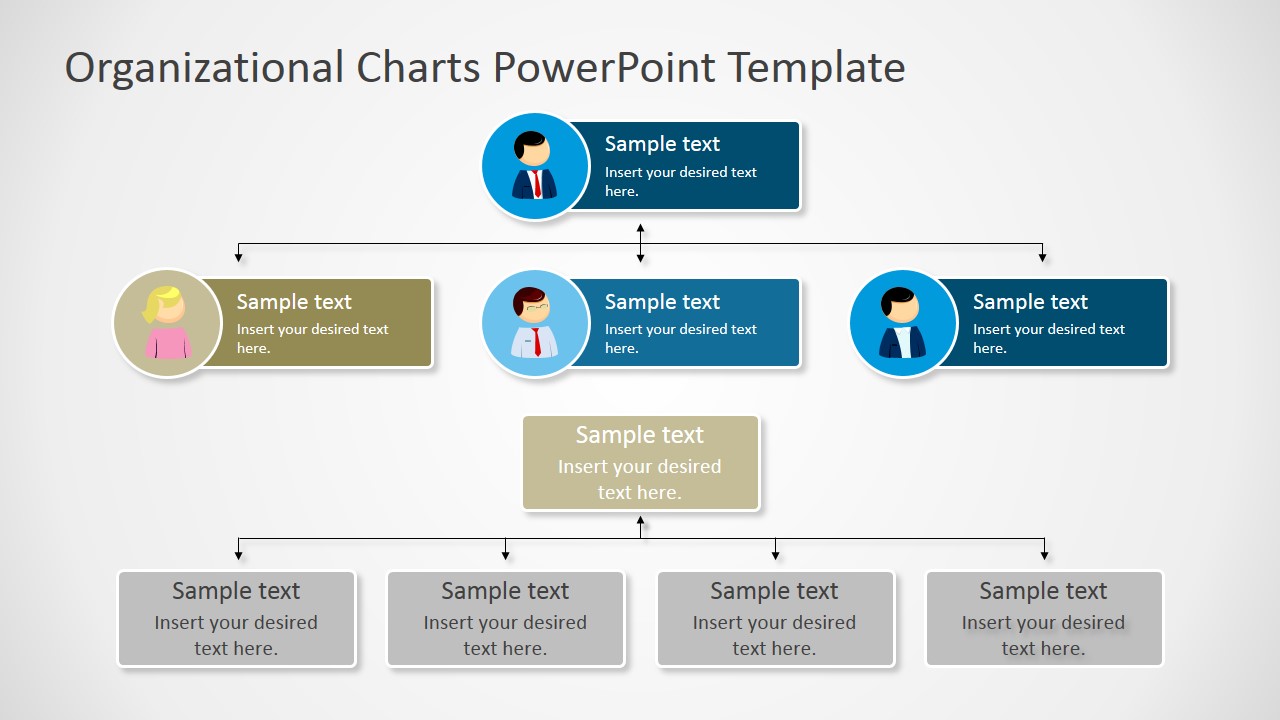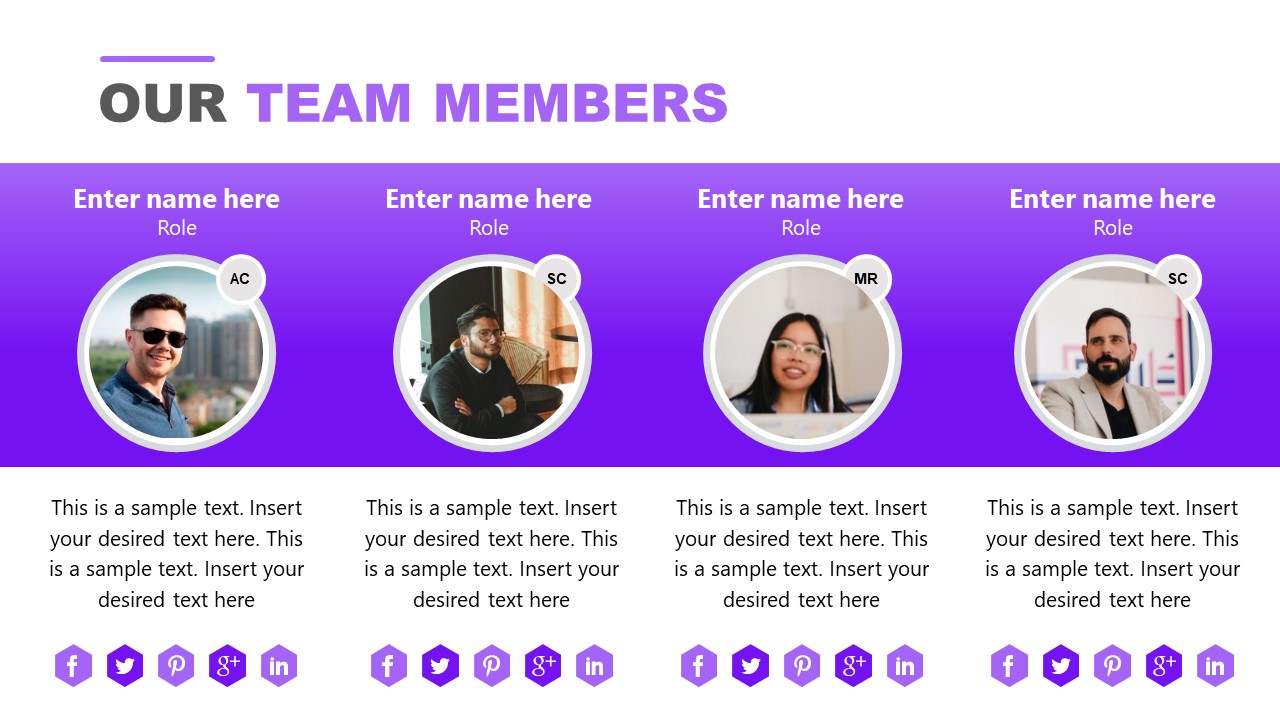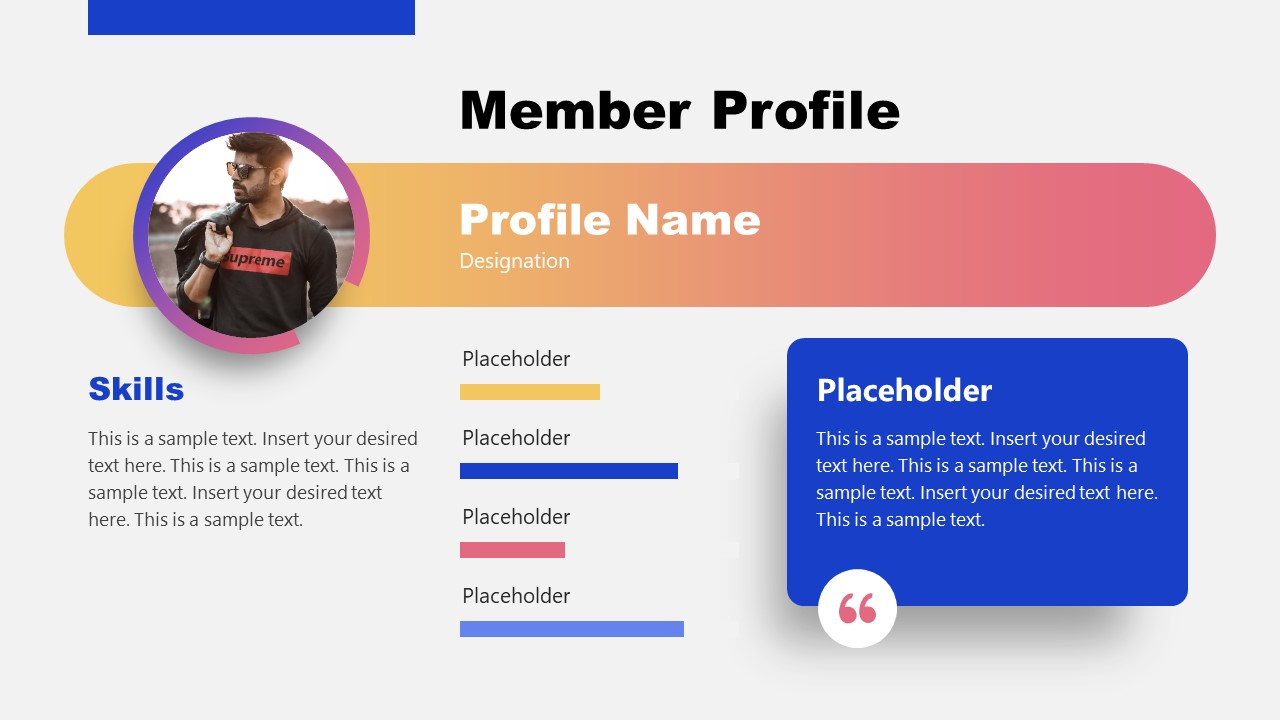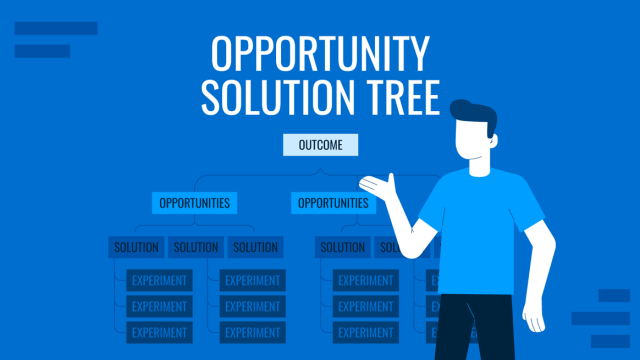Introducing the involved team to the audience is vital in academic or business presentation contexts. It boosts the authority over the topic to discuss. In this article, we will discuss the importance of presenting a team to an audience. How to introduce your team members, explain their role within the organization, and tips + examples to succeed.

Table of Contents
- What is to present a team to an audience?
- Requirements for presenting a team to an audience
- How do presentation templates help us introduce the team with style?
- Case Studies for presenting a team to an audience
- Tips for presenting a team to an audience
What is to present a team to an audience?
As commonly seen in business presentations that involve more than one speaker, the team is introduced to the audience before covering the topic of the meeting. This implies stating each member’s role for the team, the area they worked on, the expertise they bring to the team, and why they joined the project.
For the audience, a well-crafted team presentation by an organization allows them to appreciate the different perspectives that led to the result. Acknowledging which member took a significant role in what area will enable them to tailor the questions that may arise.

From a trustworthiness point of view, a formal introduction of the team helps build the organization’s reputation. This is particularly crucial in academic presentations, as the team leader conducts the presentation, and team members involved in the research may not even be present. The slide presenting the team gives context about each team member’s contribution, role, and current position in the research team.
Presenting a team to an audience also serves as a motivational factor for the team itself. It boosts confidence and promotes respect among the coworkers since they receive equal credit for their contributions. When introducing group members in a presentation, presenters could refer to both the professional and soft skills of the team members if they had significance in the project outcome to showcase.
Requirements for presenting a team to an audience
Even if we can label this stage as something “quick to complete,” truthfully, presenting a team to an audience requires a clear vision of the team structure.
The team leader is the person in charge of this process since their work was to assign the tasks to complete each step of the project due to be presented. Therefore, the team leader must keep the team’s organogram in mind.
Taking notes during each stage helps to remember which person was involved in which particular area, especially for last-minute changes. During the team presentation, the org chart template must reflect the hierarchy within the team, roles, and responsibilities.
A background check to introduce each team member is recommended. This helps reduce unnecessary information for the presentation. Some examples are:
- If we talk about a business scenario, briefly expose each team member’s expertise in the niche you’re about to present. This could be either work experience or an academic degree on the topic.
- For research presentations, such as conferences given in scientific congresses, next to each name, add the maximum degree each person achieved. Be sure to include the specific area of research the person is working on right now and mention if they are part of another collaboration team. That last point is essential for young researchers slowly building their academic reputation and seeking to network with other professionals in their area.
Another important aspect is to consider the format in which the team presentation will be made: if live, with the entire team on board, or if the team leader performs the speech and introduces them via photos on a slide. Again, this question entails studying the audience and the kind of event in the first place.
Presentations involving the presence of the entire team usually happen for entrepreneurism, where the team involved in the development of a product or service is introduced to the audience of potential investors. In this case, we talk about teams with 20 members or less.
In big tech conferences, the team leader introduces the team, making it optional for them to attend the event. Large corporations opt for videos that brief about the company’s structure, sometimes followed by an organogram presenting the department directors or people strictly involved in the project, plus their role.
Academic conference presentations include a slide that briefs the team members, their roles, and expertise. A friendly practice is adding a photo of the whole team on the following slide since that helps boost the presence of the organization they work.
Why Team Profiles Matter in Pitch Decks
In business presentations, especially pitch decks, the team profile section plays an important role. Potential investors and stakeholders want to ensure that the individuals behind a venture possess the necessary expertise to execute the business plan effectively. Introducing your team profiles within a pitch demonstrates that you have the right people with the relevant experience, skills, and track record to realize your vision and deliver returns.
When introducing a team in an investor’s pitch deck presentation, it’s important to highlight not only the roles of each team member but also their key accomplishments and how their combined expertise contributes to the success of the project. For instance, focusing on how a lead developer’s technical background complements the marketing director’s industry knowledge can help investors see the synergy within the team, further solidifying trust in your ability to deliver results.
How do presentation templates help us introduce the team with style?
One common issue speakers face in this kind of presentation is lacking graphic design skills. Therefore, the resulting slides may look dull, unattractive, or filled with pointless data. This is where presentation templates come to give a helping hand.
The first thing to consider with PowerPoint or Google Slides templates is that you don’t require a broad knowledge of either software or graphic design. The pre-made designs are fully editable, crafted by professionals who seek to help users power up their presentations for quality results. Hence, you don’t need to worry about matching color schemes, font pairing, or how much text to include in the slide – those decisions were pre-made for you.

Secondly, these presentation slides help us save countless hours, as, for instance, an organogram would take to build line by line. You simply drag the photos required into the presentation, insert the text in the placeholder areas, and that’s it.
What Information to Include in a Team Slide?
Each team slide can be different, but there are some common characteristics between different team slides. The team slide may include the following elements:
- A headshot of each team member (rectangular, circular or using any other shape format or style)
- Name and job title of each member
- Credentials, Awards, certifications
Case Studies for presenting a team to an audience
To further understand this topic, we will introduce three potential scenarios for presenting your team in front of an audience.
Case #1 – Presenting a team at a tech conference for a product release
A medium-sized company – whose trajectory in the mobile phone industry goes back to 2020 – is currently attending a trade show similar to CES. They aim to present themselves as manufacturers of docking stations for phones and tablets with wireless charge technology.
Since their company’s reputation is still developing, this is their most significant trade show attendance. Therefore, it’s vital to present the team backing up the company, to ensure trustworthiness. At the same time, they only count with a limited space area at the exhibition stand.
The HR and Marketing teams envision a strategy that attends to the executives’ demands for presenting the team as innovative while not missing the chance to promote the product in the brief attention span they can get.
The following example shows a creative way to introduce a team in a presentation; four pillars of innovation with a track record background.

The slide shows experience based on previous company roles. It reinforces the idea that the innovation of the company is driven by people breed in the most important mobile and engineering companies in the world.
Since consumers go around the stands, inquiring about details on products that pick their interest, the stand is designed following these premises:
- A section to show actual product samples that consumers can test to check their quality and performance.
- A big display of the team slide. This will drive the attention of industry resellers.
- A big screen showing a reel that explains in 40 seconds what the product does + 20 seconds about what the company is, its values, and its team.
- Make digital flyers available for the customers; briefing about the product, the company’s history, and testimonials from selected workers with broad expertise in the subject.
By using these four strategies, the company ensures three key points. First, they grab the consumer’s attention by showing an actual product they can try. Secondly, they target people passing by, with the 1-minute reel, which can be seen from afar and a panel of team members well known in the mobile and engineering fields. Finally, the flyer retains the customer’s interest by presenting not just the product but information about the company, contact data, and the names of the people involved in this product release. Such information (company’s website/social media or team members’ names) can be researched later by consumers, helping bring authority and trust to the brand.
Case #2 – Pharmaceutical conference in which a team presents their cutting-edge development
A well-respected team of researchers is attending a pharmaceutical conference. The poster session showcases their latest research paper about a new compound to treat insomnia without rebound effects. Fellow researchers look at what the poster exposes, the data that backs up the research, and the names of the scientists involved in this study.
At the time of delivering the presentation, the team leader for this research group opens the presentation with a slide listing the title for the research and the area group where their study takes place. Since the topic may be a bit controversial, the team leader opts to present the team first, as a couple of his coworkers in this project are respected neuroscientists that researched insomnia, with well-acknowledged articles on the topic.

By doing this team introduction at the beginning of the presentation instead of the usual practice of leaving the team slide to the end, the team leader ensures no spectator would label the research as silly material. The curriculums of the team members speak of their expertise on the subject, their trajectory as respected scientists, and their non-conventional approach to the discipline. The placing of a presenting a team slide is crucial for attracting the audience’s interest and backing up their authority on the subject.
Case #3 – A company meets their new SEO team
The marketing department of an e-commerce company is seeking to delegate the SEO efforts to a specialized team. Their current workload doesn’t allow the marketing members to dedicate the required time to SEO, and their lack of a proper strategy and skills, demotes them in search engine rankings against their competitors.
After a lengthy process, an the company built a team whose values align with the company’s strategy. The first meeting is about to take place between the marketing department and the SEO team. The marketing department only has a brief reference about the SEO team since the HR recruiters managed the entire process.
As an introductory meeting, the location picked is the meeting room for the company, which has a large table and a projector. Seating in front of each other, both teams greet and proceed to continue with the agenda. The SEO team prepared a presentation that exposes their history and expertise, the team members that will take part in this project, under which roles, and KPIs gathered after their initial analysis of the data provided by the company.

The team leader for the SEO crew proceeds to explain their history, previous experiences, and success stories in similar projects. The presenting the team slide features each team member participating. It showcases pictures, names and role; this helps the marketing team to identify each member quickly.
One by one, each of the 10 members of the SEO crew presents themselves, referencing their role in the project and the essential skills that will contribute to this company’s growth. They also explain that they would be using a state-of-the-art SEO management platform to conduct their research, analyze data, and track progress, to complete the tasks efficiently.
Thanks to the detailed presentation and the creative way to introduce the team, the marketing managers now understand who is in charge of which section and whom to contact for the project’s different parts. The rest of the team members in the marketing department can see similarities and affinities for work areas, which in turn contribute to building a healthy relationship with their new coworkers.
Tips for presenting a team to an audience
This section will summarize some simple but powerful tips for making a great team presentation.
Tip #1 – Setting the right tone with a presentation template
As mentioned above, presentation templates save countless hours in effort and thinking about design styles for our work. But truthfully, a properly designed presentation template has the impact of expressing our vision in a graphic format.
When selecting the presentation template to use, opt for one whose color range meets your company’s branding. Avoid overdoing transition effects since they can be overbearing for your audience.
The simpler, the better. Here are some suggestions for about us presentation templates you can check.
Tip #2 – Establish the key message
Presenting a team to an audience is also the perfect opportunity for leveraging why any customer should hire your team’s skills. Write your narrative around that idea, and be clear about which competitive edge your team can bring to the table. Give precise facts about past experience and success stories your crew helped to write for other consumers with similar needs.
Tip #3 – Be clear about roles
This is vital since it speaks about the professionalism of your team. A great team manager must keep in mind the roles of their crew, and the reason why they were assigned.
Although an organogram can help, it’s best to let the structure of the presentation be the primary asset. If a proper hierarchy is established, your team members can take turns introducing themselves when required according to the narrative constructed about the team’s experience.
Tip #4 – Make transition spaces work for you
Instead of prolonging awkward pauses between the introduction of each team member, make the presentation fluid by letting the next team member continue exposing a similar line of thought. For example, a team member can expose her expertise as a financial analyst in emerging markets, and then her coworker can take the lead by talking about his experience as a corporate investment manager.
Tip #5 – Let your team’s individual success help the narrative
In some situations, it can be ideal to talk about your team members’ previous expertise and why they landed with the current project. We are, after all, the consequence of our decisions and experience; therefore, mentioning key milestones in a team member’s career (if related to the topic) sets the ground for discussing certain approaches.
A “success” story is not always required; even a failed attempt can be seen – in academic research – as profitable since it brings a different perspective from textbook instructions.
Let your team individuals expose why their experience shaped the perspective in which they can see this upcoming project, and why they consider a creative thinking approach can be beneficial for business results or even mentoring others.
Selected Templates for Preparing Team Presentations
Check our range of products specifically selected to help you create the best introduction for your team.






